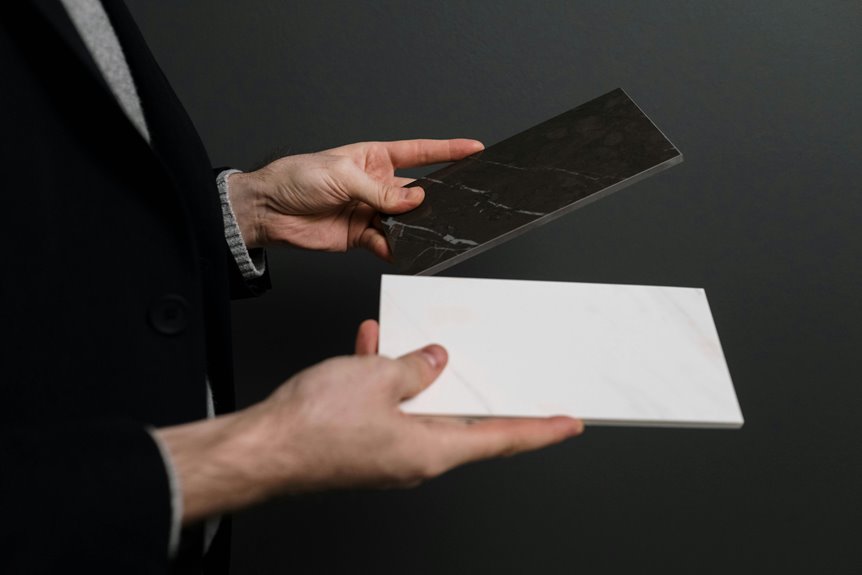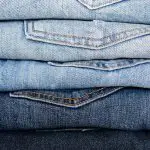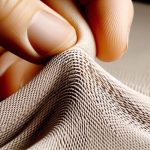Choosing between bamboo viscose and bamboo lyocell is like deciding between two paths in a forest: one looks inviting and soft, while the other promises a more sustainable journey. While bamboo viscose offers a budget-friendly option, it comes with environmental baggage. On the other hand, bamboo lyocell boasts a cleaner production process and impressive fabric qualities. So, which path will you take in your quest for comfort and eco-friendliness? Let’s explore the nuances together.
Table of Contents
Key Takeaways
- Bamboo lyocell is produced through a sustainable closed-loop process, while bamboo viscose involves harmful chemicals, raising environmental concerns.
- Lyocell offers superior strength, breathability, and moisture-wicking properties compared to the softness and lightweight nature of viscose.
- Bamboo viscose is generally less expensive due to simpler production methods, while lyocell may come with a premium price reflecting its eco-friendly benefits.
- Both fabrics are suitable for sensitive skin, but lyocell is more hypoallergenic and better at keeping skin dry.
- Misleading labels can confuse consumers; understanding the differences is crucial for making informed choices between these bamboo fabrics.
Understanding the Production Process
When you plunge into the production process of bamboo fabrics, you’ll notice that not all bamboo is created equal.
Bamboo viscose is made through a chemical process that breaks down the bamboo fibers, converting them into a viscous solution. This method often involves the use of harsh chemicals, which can pose environmental concerns.
Bamboo viscose is produced using harsh chemicals that raise environmental concerns during its conversion from fiber to fabric.
On the other hand, bamboo lyocell utilizes a more eco-friendly approach. It employs a closed-loop system that recycles water and solvents, resulting in less waste. The fibers in lyocell maintain more of the bamboo’s natural properties, leading to a softer, more breathable fabric.
Understanding these distinctions can help you make informed choices about which bamboo fabric suits your needs better and aligns with your values.
Environmental Sustainability Comparison
The differences in production processes between bamboo viscose and bamboo lyocell greatly impact their environmental sustainability.
Bamboo viscose often relies on harsh chemicals, leading to water pollution and harming local ecosystems. In contrast, bamboo lyocell uses a closed-loop process that recycles water and solvents, minimizing waste and environmental harm. This means that when you choose bamboo lyocell, you’re supporting a more eco-friendly option.
Additionally, bamboo grows quickly and doesn’t require pesticides, making it a sustainable resource overall. However, the production methods can make a significant difference in its impact on the planet.
Fabric Properties: A Closer Look
Exploring fabric properties reveals significant differences between bamboo viscose and bamboo lyocell that can influence your choice of materials.
Bamboo viscose is soft and lightweight, making it a popular choice for clothing and bedding. However, it can be less durable and prone to wrinkles.
On the other hand, bamboo lyocell offers superior strength and moisture-wicking abilities, making it more resistant to wear and tear. It feels silky and drapes beautifully, which enhances its appeal for fashion applications.
Additionally, bamboo lyocell has better breathability, ensuring comfort in various climates.
If you’re looking for longevity and comfort, bamboo lyocell may be the way to go, while bamboo viscose might suit your needs for softer, lightweight options.
Health and Skin Benefits of Each Fabric
While both bamboo viscose and bamboo lyocell offer unique health and skin benefits, understanding their differences can help you make the best choice for your needs.
Bamboo viscose is known for its softness and breathability, making it an excellent option for sensitive skin. It also has natural antibacterial properties, which can help reduce skin irritations.
On the other hand, bamboo lyocell is produced through a more environmentally friendly process, resulting in a fabric that’s even more hypoallergenic and moisture-wicking. This means it can keep your skin dry and comfortable, especially during hot weather.
Both fabrics are gentle against your skin, but if you’re particularly sensitive or eco-conscious, bamboo lyocell might be the better choice for you.
Market Trends and Consumer Preferences
As consumer awareness of sustainability grows, bamboo lyocell is gaining traction in the market. Shoppers are increasingly drawn to environmentally friendly fabrics, making bamboo lyocell a popular choice.
You’ll find that consumers appreciate its eco-conscious production process and biodegradable nature. Additionally, the softness and breathability of bamboo lyocell appeal to those seeking comfort in their clothing.
- Consumers prioritize sustainable materials.
- Eco-friendly practices influence purchasing decisions.
- Transparency in sourcing is highly valued.
- The demand for biodegradable fabrics is rising.
- Comfort and quality remain key factors.
These trends indicate that as you shop, you’re likely to choose brands that align with your values, pushing bamboo lyocell further into the spotlight.
Cost Analysis: Viscose vs. Lyocell
When you compare bamboo viscose and lyocell, it’s essential to look at production costs and how they impact market prices.
You’ll notice that these differences can affect what you pay as a consumer. Understanding this cost analysis helps you make informed choices when shopping for bamboo textiles.
Production Cost Comparison
Understanding the production cost differences between bamboo viscose and bamboo lyocell can help you make informed choices for your textile needs.
Bamboo viscose generally has lower production costs, as the process is simpler and more established. In contrast, bamboo lyocell involves a more complex and eco-friendly process, which can increase costs.
Here are some key factors to take into account:
- Viscose production uses more chemicals, which can lower initial costs.
- Lyocell production is more sustainable, leading to potential long-term savings.
- Labor costs may vary based on manufacturing location.
- Raw material sourcing can affect pricing.
- Environmental regulations can impact overall production expenses.
Market Price Trends
While analyzing market price trends, you’ll find that bamboo viscose typically costs less than bamboo lyocell due to the differences in their production processes. Viscose production involves simpler methods, which translates to lower manufacturing costs.
On the other hand, lyocell requires more advanced technology and stricter environmental controls, driving up its price.
You might notice that the price gap varies depending on brand and quality. Eco-conscious brands often charge a premium for lyocell, appealing to consumers who prioritize sustainability.
This trend indicates a growing market for high-quality, eco-friendly fabrics, although it may come at a higher cost.
Affordability for Consumers
Choosing between bamboo viscose and bamboo lyocell can considerably impact your budget, especially since the price difference reflects their production complexities.
Bamboo viscose tends to be more affordable, making it an attractive option for budget-conscious shoppers. However, bamboo lyocell, while pricier, offers enhanced durability and sustainability benefits.
Here are some key points to evaluate:
- Production Costs: Viscose uses a simpler process, lowering its price.
- Environmental Impact: Lyocell is produced in a closed-loop system, which can justify its higher cost.
- Longevity: Investing in lyocell may save you money in the long run due to its durability.
- Comfort: Both fabrics offer softness, but lyocell often feels more luxurious.
- Brand Positioning: Premium brands may charge more for lyocell, influencing your choice.
Future Developments in Bamboo Fabric Production
As the demand for sustainable textiles grows, innovations in bamboo fabric production are likely to reshape the industry.
You can expect advancements in eco-friendly processing methods, making bamboo textiles even more sustainable. Research is focusing on using closed-loop systems, which recycle water and solvents, minimizing environmental impact.
Additionally, new technologies might enhance the durability and softness of bamboo fabrics, offering you higher quality options. Companies are also exploring hybrid blends that combine bamboo with other sustainable fibers, resulting in unique textures and functionalities.
As these developments unfold, you’ll find more stylish, comfortable, and eco-conscious choices in the market, making bamboo fabrics an even more attractive option for your wardrobe.
Embrace the future of textiles with bamboo’s potential!
Navigating the Challenges of Adoption
Despite the promising future developments in bamboo fabric production, maneuvering through the challenges of adoption can be complex for both consumers and manufacturers.
Navigating the complexities of bamboo fabric adoption presents challenges for both consumers and manufacturers alike.
You might face uncertainties regarding the environmental impact and the production processes. Manufacturers need to guarantee quality while keeping costs competitive. As a consumer, you must navigate a market filled with varying claims about sustainability and comfort.
Here are some challenges to take into account:
- Misleading Labels: Understanding the differences between bamboo viscose and lyocell can be tricky.
- Cost Considerations: Higher-quality bamboo fabrics often come with a steeper price tag.
- Availability: Not all retailers carry a wide selection of bamboo products.
- Quality Variability: Different manufacturing processes can lead to inconsistent quality.
- Consumer Awareness: Educating yourself on bamboo fabric’s benefits is essential.
Frequently Asked Questions
Can Bamboo Lyocell Fabric Be Recycled?
Yes, bamboo lyocell fabric can be recycled. When you choose to recycle it, you’re supporting sustainability. Just make certain you follow local recycling guidelines, as not all facilities accept this specific type of fabric.
How Do Bamboo Fabrics Compare to Cotton?
Bamboo fabrics often outperform cotton in softness and moisture-wicking properties. You’ll find them more breathable and eco-friendly, but cotton is usually more durable. Both have unique qualities, so your choice depends on your specific needs.
Are There Any Ethical Concerns With Bamboo Sourcing?
As you explore bamboo’s allure, remember its roots. Ethical concerns arise from unsustainable farming and chemical processing. You’ll want to seek brands prioritizing responsible sourcing, ensuring your choice nurtures both the planet and its people.
What Are Common Uses for Bamboo Lyocell Fabrics?
Bamboo lyocell fabrics are often used in clothing, bed linens, and towels due to their softness and breathability. You’ll also find them in activewear and eco-friendly products, making them a versatile choice for sustainable living.
How Should I Care for Bamboo Fabrics?
To care for bamboo fabrics, you should wash them in cold water on a gentle cycle, avoid bleach, and tumble dry on low. Always check labels for specific instructions to maintain their softness and durability.
- Can You Iron Suede Fabric? How to Do It Safely - July 12, 2025
- Dyeing Faux Suede Fabric: Tips for Success - July 12, 2025
- How to Clean Suede Furniture Fabric at Home - July 12, 2025






